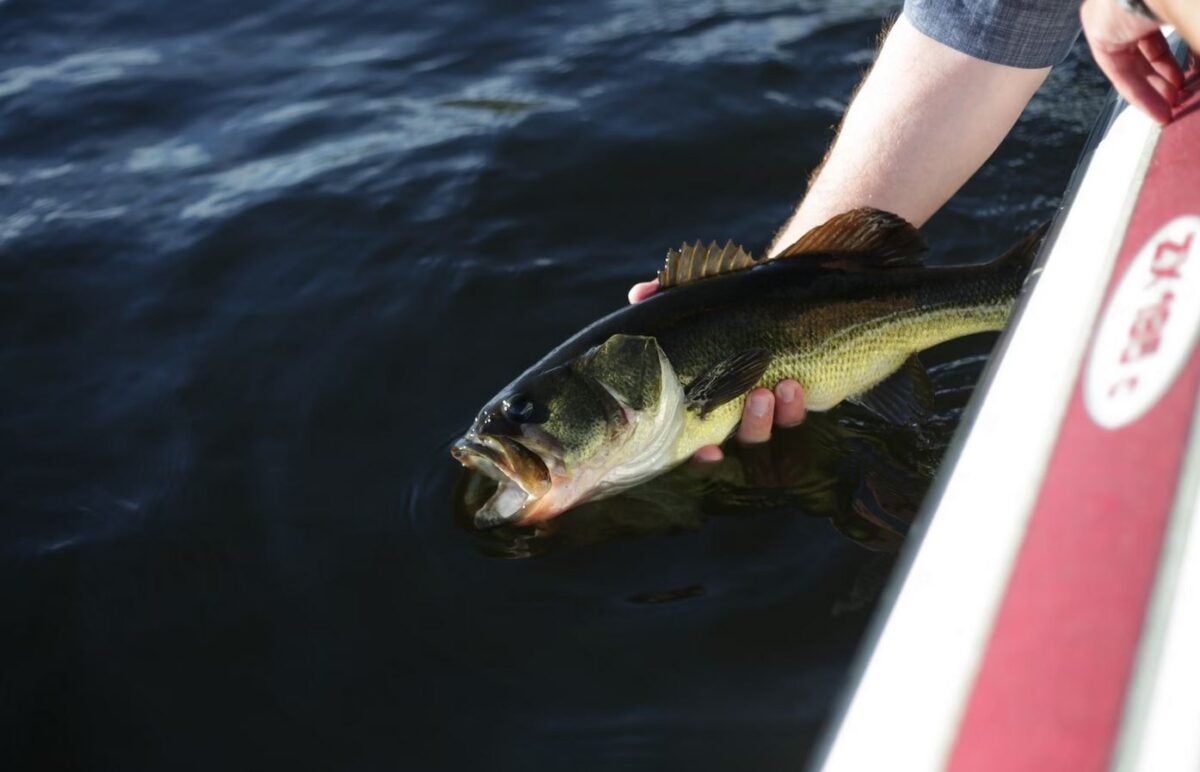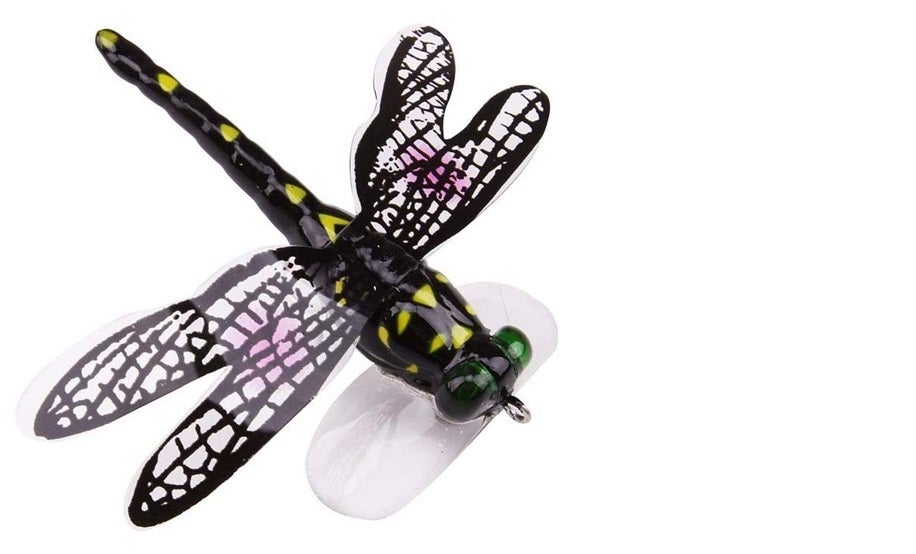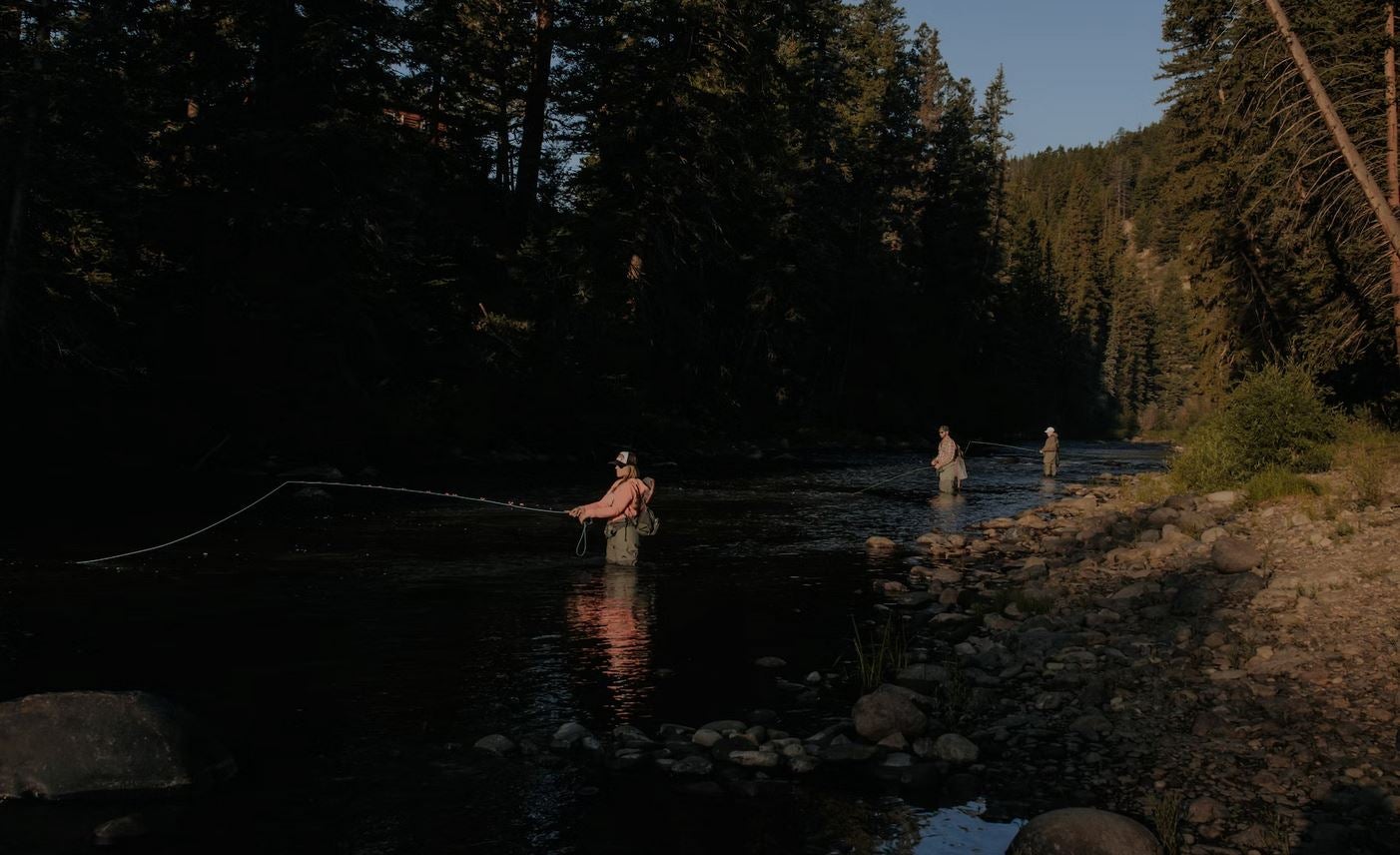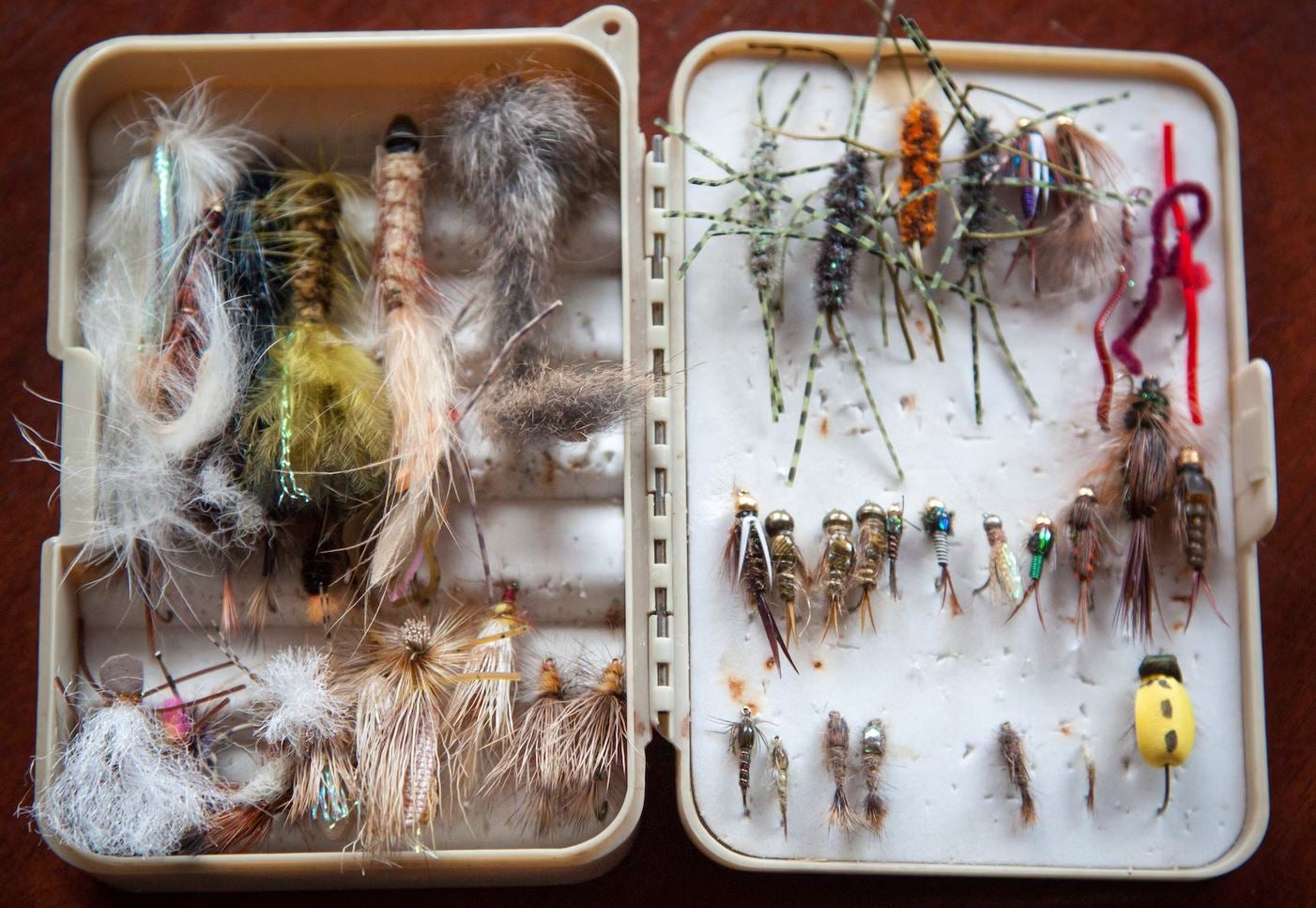



Bass Fly Fishing – The Secrets to Success on the Water
Travis Olander 06.22.23
Let’s ditch the trout for a bit. Bass fly fishing can make for one of the most exciting fishing trips you’ll ever take. Bass are fast, aggressive, opportunistic, and utterly willing to break the water’s surface for an impressive leap at a dry fly. But snagging a Largie or Smallie with a fly setup is no small feat. Let’s dive into the right gear you need, talk about the best fly lures for bass, and go over the methods and tactics you need to follow to snag a bass with your fly rod.

We’ve covered some of the key differences between Smallmouth and Largemouth Bass. Here are the important points to remember when it comes to fly fishing for both:
Largemouth like cover and shallows. Largies tend to sulk around weeds and under shade, and they prefer shallow waters. They tend to avoid large, open spaces — especially on sunny days — and they don’t like fast currents. Those characteristics spell success for the fly fisherman who’s willing to stick with the simple stuff: A small dry fly, floating line, and perfect presentation.
Smallmouth like cold, fast water. Smallies will migrate to warmer, shallow depths in early spring, for spawning. But beyond the spawn, they’re more likely to be found in cooler, deeper water. They don’t mind fast currents and get active when streamers and rivers are flowing fast. That means you’ll need to focus on wet flies, sinking line, wind resistance, and mending against the currents.

Lucky for us, Bass aren’t picky eaters. Their territorial aggression and opportunistic biting means they’ll snatch up just about anything that looks like food they can eat. But there are some particular fly lures that’ll really entice even the most spooked Bass to take a nibble. We’re not just talking about simple dry flies, they always do a great job — let’s look at the other stuff you can use on the hunt.
Fly fishing is already a sport that requires finesse and practice. Follow these tips and tricks to help ensure your bass expedition isn’t a waste of time.
Stick to The Early Morning or Evening

Sure, you might’ve had some luck throwing a crawfish into the water with your baitcaster at high noon. But fly fishing limits your reach and depth. You’ll need to fish when bass are cruising for breakfast or dinner in cooler waters that aren’t soaked and roasted by the midday sun. Low-light hours are the key to success when it comes to fly fishing for Bass.
Let The Fly Rest
Bass are curious creatures, and they like to probe, observe, and nibble before striking and running. Let the fish notice your lure. Mimicking prey is even better — that means moving your lure with little blips, starts, and pauses. Finesse, then rest, and you’ll find success.
Small Flies? Go Bigger

Bass are greedy gulpers. They’re not afraid to inhale a large streamer or fly. If you’ve been filling your tackle with lures made for Trout, Bluegill, and smaller fish, it’s time to try out some larger lures. The pay-off might just be the biggest Bass you’ve ever hooked.
You’ve probably been sticking with a 2wt to 6wt rod if you’ve never fly fished Bass. If that’s the case, it’s an excuse to buy a new rod: You’re going to want a 7wt or 8wt rod if you’re trying to hunt the biggest Mouths. You’ll want to focus on a medium-fast or fast action, too. The stiffer rod will give up a little feedback, but that’s okay.
Bass are violent biters and you’ll be hard pressed to mistake a hook-setting moment for anything else. Faster action will also help your line push through heavy wind and currents, and it’ll provide better power and accuracy for those heavier flies.
When it comes to fly line, this angler prefers about 6 feet of fluorocarbon for the leader, with one to two feet of 1X to 3X tippet. I like sticking with a moderate sinking-tip or full-sink line that’s weight-forward, since I cast more nymphs and streamers than topwater lures when I’m shooting for Bass.

